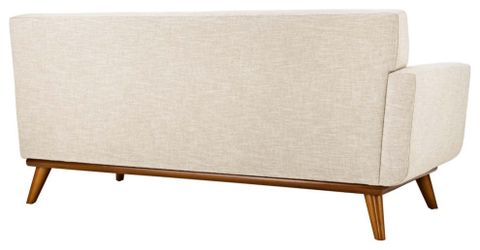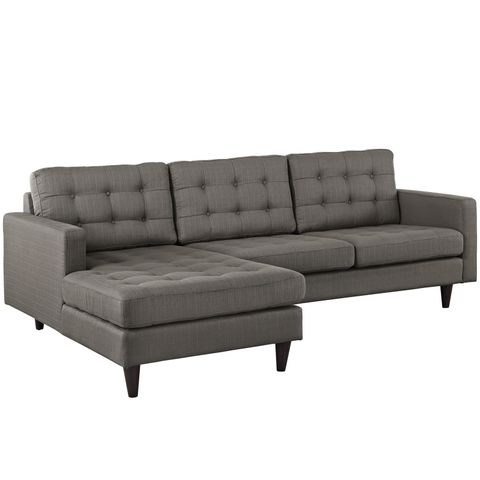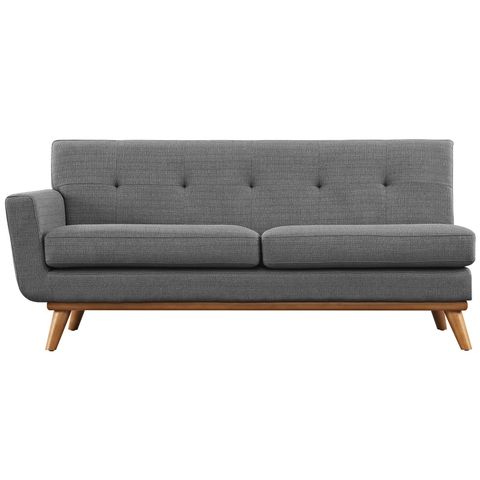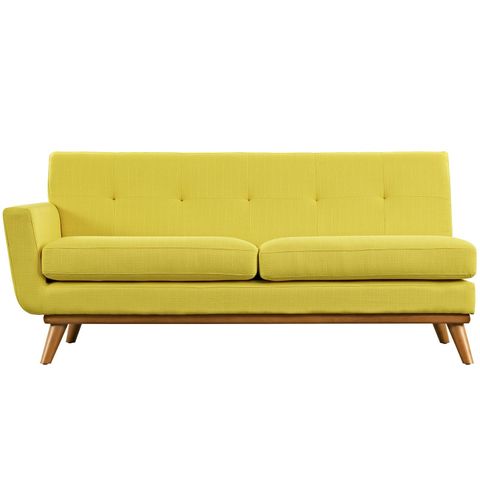So, you’re on the hunt for a gray loveseat. Great choice. Gray is wonderfully versatile, acting as a neutral canvas for countless decor styles. But with so many options out there, how do you pick the one that’s just right? It’s not just about the color; the texture of the fabric and the overall design play a massive role in how it looks, feels, and functions in your space. Let’s unravel the choices and make sure your next loveseat is a perfect fit.
A loveseat, by its very nature, is an invitation to cozy up. And when it’s gray, it offers a sophisticated backdrop that can lean modern, traditional, or anything in between. But the true magic lies in the details. What kind of gray are we talking about? A deep charcoal, a light, airy silver, or something in between? And what about the material it’s upholstered in? This decision impacts everything: durability, comfort, maintenance, and the overall aesthetic. Don’t worry, we’re going to walk through it all, making this selection process feel less like a chore and more like an exciting exploration.
The Fabric Factor: More Than Just a Pretty Face
The fabric you choose for your gray loveseat is arguably the most crucial decision. It dictates how it feels to the touch, how it holds up to daily life, and how easy it is to keep clean. Let’s break down some popular contenders.
Natural Fibers: Breathable and Beautiful
- Cotton: A classic for a reason. It’s breathable, comfortable, and generally affordable. However, cotton can wrinkle and stain more easily than synthetics, so it might not be ideal for high-traffic areas or homes with pets and young children unless it’s treated or blended. Think of a soft, lived-in feel.
- Linen: Offers a sophisticated, slightly textured look that’s wonderfully breathable and cool. Linen wrinkles easily, giving it a relaxed, natural charm. It’s durable but can be prone to staining. If you love that effortlessly chic vibe, linen is a strong contender.
- Wool: Known for its warmth and durability. Wool fabrics can be quite luxurious and are naturally resistant to wrinkling and staining. They can be a bit pricier, and some might find certain wool textures a little itchy, though many modern blends are very soft.
Synthetics: Durability and Easy Care
- Polyester: This is a workhorse fabric. It’s incredibly durable, resistant to wrinkling and fading, and often more affordable. Many modern polyesters are designed to mimic the look and feel of natural fibers, offering great value and ease of maintenance. It’s a fantastic option for busy households.
- Microfiber: Think ultra-soft and incredibly resilient. Microfiber is made of very fine synthetic fibers, making it exceptionally resistant to stains and wear. It’s a popular choice for families and pet owners because spills often wipe right off. It has a velvety texture that’s inviting.
- Nylon: Often blended with other fibers to boost durability and abrasion resistance. Nylon is strong and can handle a lot of wear and tear, making it a good choice for high-usage furniture.
Blends: The Best of Both Worlds
Often, the best solution is a blend. A cotton-polyester blend, for instance, can give you the comfort of cotton with the added durability and wrinkle resistance of polyester. Always check the fabric composition to understand its strengths and weaknesses.
Decoding Durability and Maintenance Needs
Let’s be real: life happens. Spills, pets, kids, and general wear and tear are all part of the package. When selecting your gray loveseat fabric, think about your household’s lifestyle.
- For families with young children or pets: You’ll want something highly durable and stain-resistant. Microfiber, performance polyesters, and tightly woven fabrics are your best friends. Look for fabrics treated for stain and water resistance.
- For a more formal living room: You might opt for a more delicate fabric like linen or a fine weave cotton, where spills are less likely and maintenance is more controlled.
- For a high-traffic area: Durability is key. Blends, performance fabrics, and tightly woven materials will stand the test of time better.
Maintenance Tips:
- Always check the care label. Different fabrics require different cleaning methods.
- For most upholstery, regular vacuuming with an upholstery attachment will keep dust and debris from settling in.
- Address spills immediately. Blot, don’t rub, and use a clean cloth.
- Consider a fabric protector treatment for added peace of mind, especially on lighter grays.
Style Speak: Finding the Right Silhouette
Beyond the fabric, the actual shape and design of the loveseat – its style – will dramatically influence your room’s overall look and feel. Gray is a chameleon, so the style can really shine through.
Modern & Contemporary
- Characteristics: Clean lines, minimalist design, often with slim arms, metal or wooden legs, and a lower profile. Think sleek and uncluttered.
- Gray Loveseat Example: A charcoal gray loveseat with squared-off arms and tapered wooden legs, upholstered in a smooth, tight-weave fabric.
Traditional & Classic
- Characteristics: Rolled arms, skirted bases, plush cushions, and often ornate detailing. These tend to feel more formal and established.
- Gray Loveseat Example: A dove gray loveseat with inviting rolled arms, deep button tufting, and a skirted base, perhaps in a soft chenille or velvet.
Transitional
- Characteristics: A blend of modern and traditional elements. These styles are incredibly popular because they offer a balanced, timeless look that fits into many decor schemes.
- Gray Loveseat Example: A medium gray loveseat with slightly flared arms, comfortable, supportive cushions, and simple block feet. It’s sophisticated without being stuffy.
Mid-Century Modern
- Characteristics: Tapered legs, often exposed wood frames, simple silhouettes, and a focus on organic shapes.
- Gray Loveseat Example: A silvery-gray loveseat with iconic splayed wooden legs and a streamlined frame, upholstered in a textured fabric.
Scandinavian
- Characteristics: Simplicity, functionality, and a connection to nature. Light colors, natural wood accents, and clean, airy designs.
- Gray Loveseat Example: A light ash gray loveseat with clean lines, possibly with light wood legs, and a focus on comfortable, practical seating. Upholstered in a textured, durable fabric.
The Nuances of Gray: Undertones and Shades
Gray isn’t just gray. It’s a spectrum, and understanding its undertones can make or break your design vision. Does your gray lean blue, green, purple, or brown? This subtle difference can drastically change how it interacts with other colors in your room.
- Cool Grays: Often have blue or purple undertones. They tend to feel more modern, crisp, and sophisticated. These work wonderfully with other cool colors like blues, greens, and silvers, and can provide a striking contrast with warmer tones.
- Warm Grays: Have brown or yellow undertones, sometimes called ‘greige’ (gray-beige). They feel cozier, more inviting, and can be easier to integrate with warmer color palettes like creams, browns, and even some softer reds or oranges.
- Neutral Grays: Aim to be in the middle, without a strong leaning towards warm or cool. These are incredibly versatile and can adapt to almost any color scheme.
Consider the light in your room. Natural light and artificial lighting can alter how a gray fabric appears. What looks perfect in a showroom might appear different in your home. It’s always a good idea to get fabric swatches and see them in your space at different times of the day.
Putting It All Together: Your Practical Checklist
Ready to make a decision? Here’s a quick rundown to guide you:
- Assess Your Lifestyle: Who will be using the loveseat? Do you have pets or kids? How much wear and tear can it expect?
- Determine Durability Needs: Based on your lifestyle, what level of durability and stain resistance do you require?
- Choose Your Fabric Type: Select from natural, synthetic, or blend fabrics, keeping your durability and comfort preferences in mind.
- Consider Maintenance: How much time and effort are you willing to put into cleaning and upkeep?
- Define Your Style: What aesthetic are you going for? Modern, traditional, transitional, or something else?
- Understand Your Gray: Look at undertones and how they’ll work with your existing decor and the light in your room.
- Get Samples: Always, always get fabric swatches to see in your home before committing.
- Think About Comfort: Sit on it if you can. Does it feel good? Is the seat depth and back support what you’re looking for?
Beyond the Basics: Adding Personality
Once you’ve got the fabric and style sorted, don’t forget the finishing touches that make the loveseat truly yours.
- Pillows and Throws: These are your secret weapons for adding pops of color, texture, and personality. A cozy knit throw can soften a sleek modern loveseat, while vibrant patterned pillows can liven up a more subdued gray.
- Legs and Feet: The material and style of the legs can significantly impact the overall look. Are you after dark wood for a traditional feel, sleek metal for modern, or light, tapered wood for a Scandinavian vibe?
- Cushion Style: Are you looking for plush, sink-in cushions or firmer, more supportive ones? Dacron wrap, down-blend, or foam cores all offer different feels and longevity.
- Contrast Piping: Adding a contrasting color or fabric to the piping along the seams can add a subtle, tailored detail that elevates the design.
Finding the perfect gray loveseat is a journey of understanding your needs and preferences. By carefully considering the fabric’s texture, durability, and maintenance alongside the loveseat’s style and the specific shade of gray, you’re well on your way to selecting a piece that’s not only beautiful but also a functional and comfortable addition to your home for years to come. It’s about creating a space that feels like you, a place where you can truly relax and make memories. Happy hunting!














